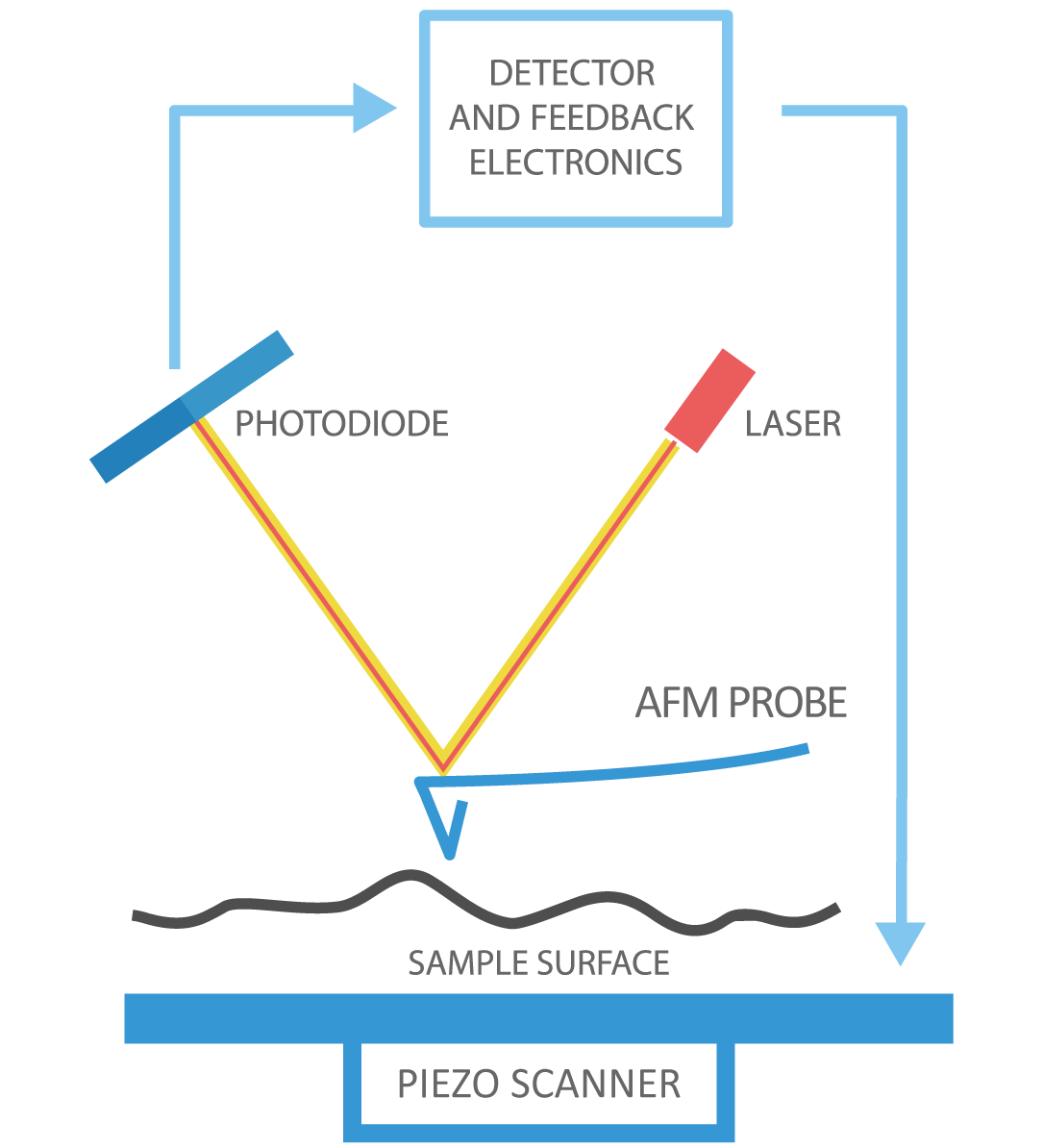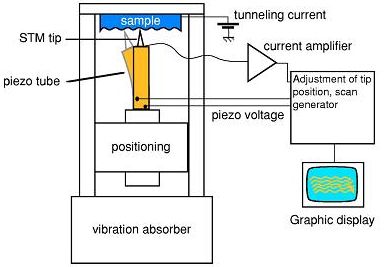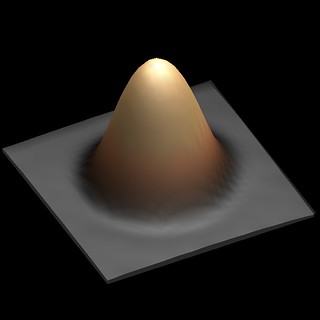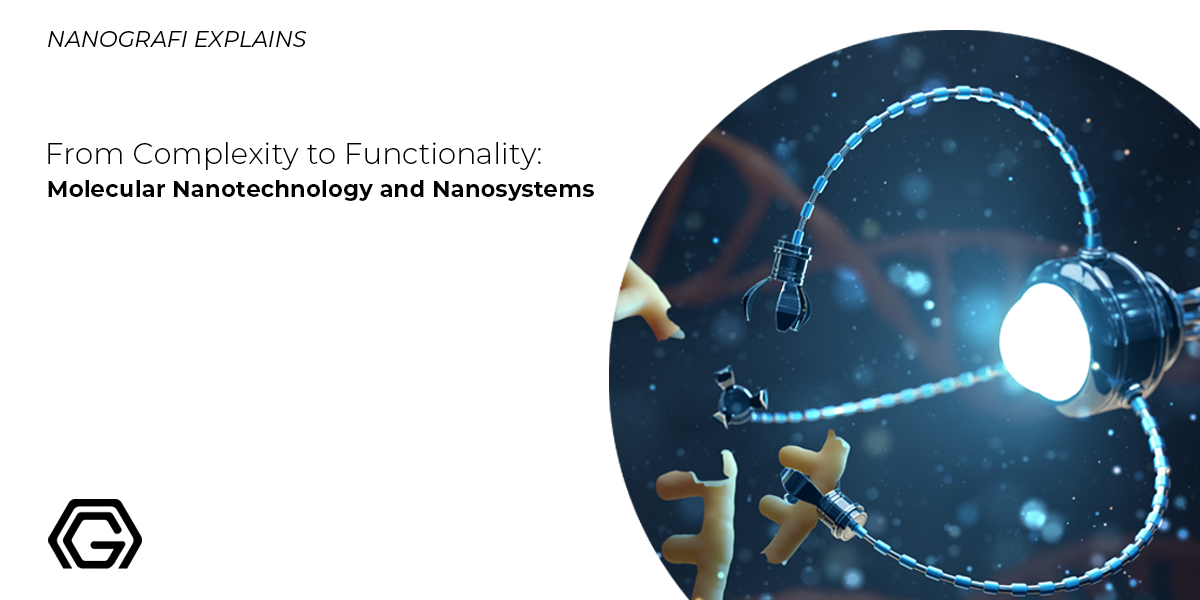From Complexity to Functionality: Molecular Nanotechnology and Nanosystems
Molecular nanotechnology and nanosystems is a branch of science that aims to create new materials and devices by controlling matter at the atomic and molecular level. This technology works at the nanometre scale, offering precision and efficiency beyond traditional production methods.
The importance of nanotechnology stems from its potential revolutionary applications in fields as diverse as medicine, energy, environment and electronics. This blog post aims to provide a comprehensive review of the fundamental principles underpinning molecular nanotechnology and explore its various applications in different fields. Discover Nanografi's innovations in Nanotechnology now.
Introduction
Leading scientists and research organisations in the field of nanotechnology, such as Richard Feynman and Eric Drexler, have played an important role in the advancement of this technology. Feynman's famous lecture ‘There's Plenty of Room at the Bottom’ first introduced the potential of nanotechnology to a wide audience, while Drexler laid the theoretical foundations for molecular nanotechnology and nanosystems in his book ‘Engines of Creation’.
Molecular nanotechnology (MNT) aims to build materials and devices by precisely controlling atoms and molecules, while nanosystems enable the transformation of these molecular structures into complex functional systems. This field is often closely related to nanosystems and encompasses the development and use of materials and devices at scales ranging from 1 to 100 nanometres.
Fundamentals of Molecular Nanotechnology
At the heart of MNT is the construction and control of structures at the molecular level. This precision engineering is made possible by advances in tools such as atomic force microscopes and scanning tunnelling microscopes, which allow scientists to observe and manipulate individual atoms and molecules. MNT aims to build complex molecular machines, nanorobots, capable of performing specific tasks with unprecedented precision and efficiency.
Nanosystems: Integration and Functionality
Nanosystems are integrated systems that operate at nanoscopic scales and assemble various nanoscale components to fulfil specific functions. These systems often mimic biological processes and exploit the principles of self-assembly and molecular recognition. For example, nanosystems can be designed for targeted drug delivery, where nanoparticles carry therapeutic agents directly into diseased cells, minimising side effects and increasing treatment efficacy.
Basic Principles of Molecular Nanotechnology
Atomic and Molecular Structure
Understanding and controlling atomic and molecular structures are fundamental to MNT. The arrangement of atoms and molecules within a material determines its properties, such as strength, electrical conductivity, and chemical reactivity. Advanced techniques, such as atomic layer deposition and molecular beam epitaxy, allow scientists to manipulate these structures with high precision, enabling the creation of materials with tailor-made properties. For instance, the precise alignment of molecules can lead to the development of high-performance semiconductors and other advanced electronic devices.
In MNT, the concept of self-assembly is crucial for constructing functional nanostructures. Self-assembly involves molecules spontaneously organizing into predefined structures without external intervention, guided by intermolecular forces. This process can produce nanoscale materials like quantum dots, nanowires, and other complex nanostructures, each possessing unique electrical, optical, and mechanical characteristics. These materials are essential in fields ranging from electronics to biomedicine, where they are used in applications such as targeted drug delivery systems and high-resolution imaging technologies.
Nanoscale Material Properties
Nanomaterials often display distinct physical and chemical properties compared to their macroscale equivalents, largely due to their nanoscale dimensions. One key factor is the increased surface area-to-volume ratio, which means that a larger proportion of the atoms are on the surface compared to bulk materials. This high surface area can enhance chemical reactivity and catalytic activity, making nanomaterials particularly useful in applications like catalysis and environmental remediation.
Quantum effects also become significant at the nanoscale. In nanomaterials, the quantum confinement effect restricts the movement of electrons, leading to discrete energy levels. This results in unique optical, electrical, and magnetic properties that are not present in bulk materials. For instance, quantum dots, which are semiconductor nanoparticles, exhibit size-dependent optical properties, allowing them to emit different colors of light depending on their size. These unique properties are exploited in various high-performance devices, including medical imaging, solar cells, and quantum computing technologies. Surface energy, which becomes more pronounced at smaller scales, can influence the mechanical properties and stability of nanomaterials, further distinguishing them from their bulk counterparts.
Self-assembly and Molecular Manufacturing
Self-assembly refers to the spontaneous coming together of atoms or molecules into larger structures in a certain order. Molecular production enables these structures to be produced by controlling them in the desired way. These methods offer a high-precision and efficient production process.
Types and Applications of Nanosystems
Nanoelectronics and Nanophotonics is the process of designing and manufacturing electrical circuits on a nanoscopic scale. Studies in this field enable the development of faster and smaller electronic devices. Nanophotonics deals with the control of light at the nanoscopic scale. This technology could revolutionise optical communication systems and sensors.
Nanomedical Applications: The applications of nanotechnology in medicine are quite wide. For example, nanorobots, drug delivery systems and biosensors can be used in the diagnosis and treatment of diseases. Nanomaterials can function as nanoparticles or virus-like particles carrying chemotherapy drugs.
Environmental and Energy Applications: Nanotechnology can also play an important role in solving environmental problems. For example, nanofilters used in water treatment processes provide effective removal of pollutants. In the field of energy, solar panels and batteries made of nanomaterials offer more efficient energy generation and storage.
Techniques Used in Molecular Nanotechnology
Atomic Force Microscopy (AFM) is a technique for imaging and measuring surfaces at the atomic level. AFM acquires high-resolution images using a probe that scans the surface of a sample.
Scanning Tunnelling Microscopy (STM) is used to study the atomic structure of conductive surfaces. STM provides precise images at the atomic level by measuring tunnelling current with a needle moving over a surface.


Figure 1. AFM schematic Figure 2. Schematic illustration of an STM
Nanolithography and Nanoimprint Techniques enable nanomaterials to be produced in desired shapes. These techniques are used in the creation of nanoscopic patterns and the production of nanostructures.
Case Study on Molecular Nanotechnology and Nanosystems
Many successful projects and researches demonstrate the potential of molecular nanotechnology. For example, IBM's atomic memory project represents a major advance in the field of data storage. In this project, IBM researchers have opened new horizons for future data storage technologies by demonstrating that data storage and manipulation at the atomic level is possible. In the project, they were able to store one bit of data using only 12 atoms, which offers a much higher density compared to traditional magnetic data storage technologies. This research is an important step in data storage and processor technologies that will enable the development of smaller, faster and more efficient devices.

Figure 3. A view from IBM Research's Nobel prize-winning microscope of a single atom of Holmium, an element used as a magnet to store one bit of data.
Conclusion
Molecular nanotechnology and nanosystems have the potential to revolutionize science and technology by enabling the precise control of matter at atomic and molecular levels. These technologies offer significant advancements in fields like medicine, energy, environment, and electronics. Techniques such as self-assembly and molecular manufacturing allow for the production of highly precise materials and devices, opening new areas of application. The innovations brought by nanotechnology hold substantial potential for future research and development, impacting a wide range of areas from industrial processes to medical applications. Pioneering projects like IBM's atomic memory demonstrate the future potential of molecular nanotechnology, leading to more efficient, miniaturized technologies. Progress in this field not only advances technology but also offers innovative solutions to many global challenges faced by society.
Add value to your projects with advanced materials developed in Nanografi's high infrastructure laboratories.
References
Feynman, R. P. (1960). There's Plenty of Room at the Bottom. Engineering and Science, 23(5), 22-36.
Drexler, K. E. (1986). Engines of Creation: The Coming Era of Nanotechnology. Anchor Books.
Whitesides, G. M., & Grzybowski, B. (2002). Self-Assembly at All Scales. Science, 295(5564), 2418-2421. https://doi.org/10.1126/science.1070821
Zhou, W., & Wang, Z. L. (2007). Scanning Microscopy for Nanotechnology: Techniques and Applications. Springer.
Nano and more. What is Atomic Force Microscopy (AFM). Nano and more: retrieved from https://www.nanoandmore.com/what-is-atomic-force-microscopy
Warwick. STM-Scanning Tunneling Microscope. Retrieved 30 July 2024 from Department of Physics: https://warwick.ac.uk/fac/sci/physics/current/postgraduate/regs/mpagswarwick/ex5/techniques/electronic/microscopy/
IBM. (2017, March 8). IBM researchers store data on world's smallest magnet - a single atom. IBM News Room. Retrieved from https://uk.newsroom.ibm.com/2017-03-08-IBM-Researchers-Store-Data-on-Worlds-Smallest-Magnet-a-Single-Atom
Nanografi. (2023, November 10). Comprehensive guide to water-soluble quantum dots. Nanografi Blog. Retrieved from https://nanografi.com/blog/comprehensive-guide-to-water-soluble-quantum-dots/
Nanografi. (2022, April 10). Synthesis and applications of silver nanowires. Nanografi Blog. Retrieved from https://nanografi.com/blog/synthesis-and-applications-of-silver-nanowires/
Nanografi. (2020, February 3). Synthesis, properties, and applications of quantum dots. Nanografi Blog. Retrieved from https://nanografi.com/blog/synthesis-properties-and-applications-of-quantum-dots/
Recent Posts
-
Turning Noise into Power: Energy Harvesting with Piezoelectric Nanogenerators
Ambient acoustic energy, once an untapped resource, is now being converted into sustainable electric …5th Mar 2025 -
Holey Super Graphene in Li-ion Batteries: Next Generation of Energy Storage
Holey Super Graphene (hG), also referred to as “holey graphene,” is redefining li-ion ba …7th Feb 2025 -
Future Communication with 5G Technology and Advanced Materials
5G technology opens the doors to a new era in communication with faster connection speeds, low laten …6th Feb 2025





